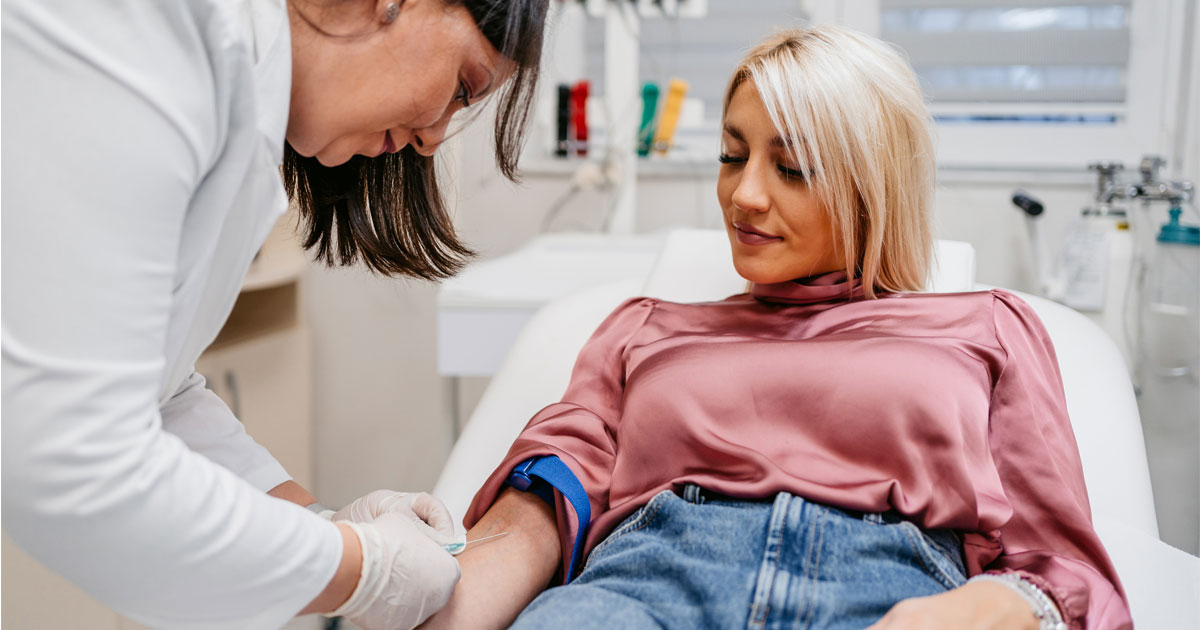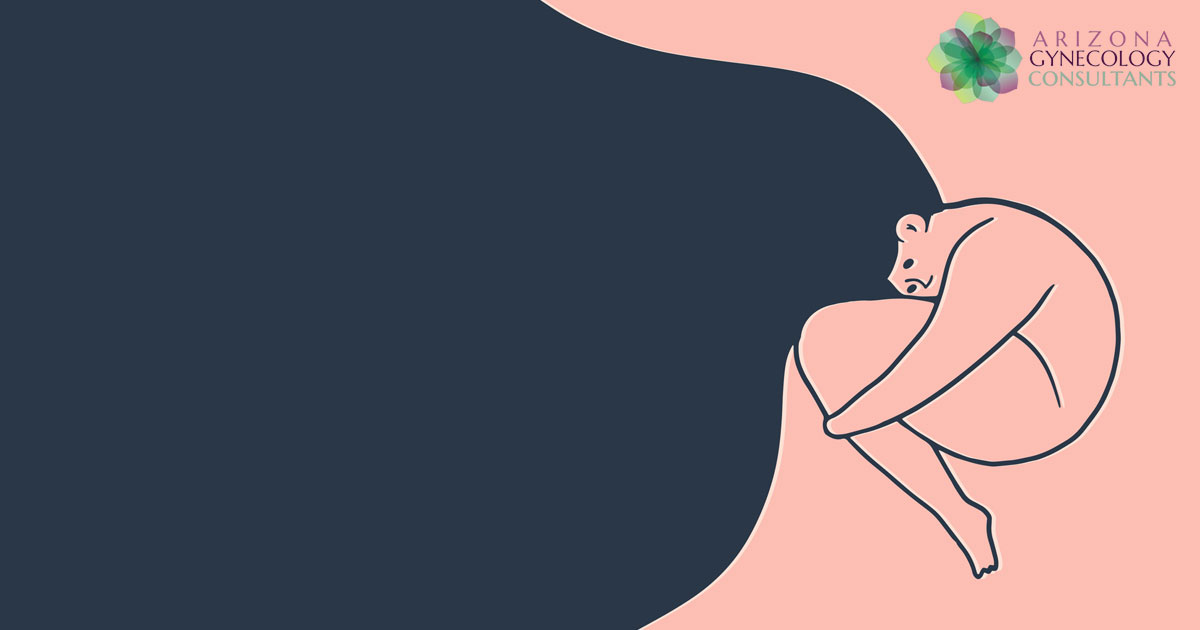As women age, it is normal to have low estrogen levels. So, what does this mean for you and your body? Is it possible for your estrogen levels to become too low? How is low estrogen diagnosed and treated?
How Estrogen Affects the Body
Estrogen is a group of steroid hormones created by the body to serve various purposes. As a sex hormone, estrogen is inextricably linked to female sexual development, reproductive health, and secondary sex characteristics like menstrual cycles, breast development, and more.
However, these and all hormones interact with more systems of the body than most people think. This means that low estrogen symptoms can involve some things that you wouldn’t normally consider.
Estrogen enters all cells in the body, though not all cells are responsive to its effects. However, that means estrogen has a number of functions.
Sexual Development and Health
The most well-known effects of estrogen are linked to sexual development and health. In youth, estrogen stimulates the growth of the uterus and the development of the breasts, buttocks, and legs. As women enter the reproductive years, estrogen helps thicken the uterine lining (endometrium) necessary to nourish a child and regulates the menstrual cycle that helps shed the additional tissue each month. It also stimulates vaginal lubrication and increases libido.
Anti-Inflammatory Properties
Estrogen can be an important immune hormone. Primarily, it helps to regulate the intricate interplay of the inflammatory response. When infection and other stresses occur, inflammation is an important part of the immune response; however, sustained inflammation can be harmful to the body. Estrogen can have both anti-inflammatory and pro-inflammatory effects to regulate this process.
Brain Function and Mental Health
Estrogen has a generally positive effect on mood regulation and mental health, as it appears to boost both serotonin and the brain receptors that interact with serotonin. This modulation of mood chemicals (known as endorphins) can improve mood, pleasure, and more. Estrogen is also involved in our memory and cognition.
Joint, Skin and Blood Health
Estrogen helps replenish collagen, which helps the skin stay elastic and healthy. Collagen production is also involved with regulating cholesterol and promoting healthy coagulation. This same set of functions also helps the joints stay flexible, which becomes more and more important as you age.
Fluid Balance
Among many other hormones, estrogen assists with balancing salt and water throughout the body. This is one of the most complex and crucial functions of the hormone. Without proper regulation, you may experience weakness, cramps, nausea, headache, and more.
Muscular Health
Estrogen directly affects the musculoskeletal tissues. Along with other hormones, estrogen can improve muscle function and reduce injury rates. In this way, estrogen is influential in muscle health.
Bone Health
Another of estrogen’s primary effects on the body is helping to maintain bone density. Estrogen regulates when the body reabsorbs bone and how much. This regulation ensures you will maintain a healthy skeletal system.
Metabolism
Estrogen helps to regulate and improve metabolism. As a result, estrogen can help to regulate weight. It also plays a role in gastrointestinal health.
Symptoms of Low Estrogen
The symptoms of low estrogen can be as varied as the functions estrogen has within the body. Because it is active in so many different bodily processes, low estrogen affects a number of systems which must then respond to the estrogen deficit, causing symptoms.
Mental Effects
As estrogen dissipates, its ability to regulate mood and focus also wane. Low estrogen may result in moodiness and trouble concentrating. In some cases, low estrogen can be tied to insomnia and mental fatigue. Unfortunately, this can exacerbate the issue, as stress and lack of sleep can be the root causes of estrogen imbalance for some people.
Bone Density Issues
Another common symptom of low estrogen is a decrease in bone density. When bone reabsorption becomes severe, this condition is known as osteoporosis. With enough bone tissue loss, the remaining bones become very brittle and are more fragile than unaffected bones. There are often no symptoms for osteoporosis until a fracture occurs. There is an increased risk of fractures due to the decreased bone strength.
Skin and Joint Issues
Due to estrogen’s role in collagen production, skin regulation, and water uptake, dry skin often occurs alongside low estrogen. With reduced collagen can also come an increase in wrinkles, sagging skin, thinning hair, inflammation and pain in the joints, weakness, and slowed recovery from injuries. Estrogen and collagen depletion can also cause GI issues.
Puberty and Development Issues
In young girls, low estrogen can also lead to a delay in puberty or slower sexual development. This can be difficult to judge as children mature at different rates. However, if some of the other symptoms listed above are also present, the concern should be brought up with your medical provider.
Menopausal Symptoms
Some of the most common symptoms associated with low estrogen are hot flashes and night sweats, which frequently occur during perimenopause and menopause. These can be accompanied by the ceasing of menstruation, tender breasts, an increase in belly fat, decrease in localized estrogen in the vagina which can lead to a decrease in producing vaginal lubrication, and a reduction in sexual desire. Other localized symptoms can be increased urinary tract infection symptoms. Sometimes, headaches can also occur along with or instead of the monthly cycle.
Estrogen and Hormonal Imbalance
Whether you’ve completed a hormone panel and learned you have low estrogen or you’ve experienced the symptoms above, it’s common to wonder why you’re experiencing low estrogen levels. In fact, there is a wide array of issues that may be the culprit. Here are the most common.
Age
The most common cause of low estrogen is advancing age. As the body ages and finishes releasing its store of eggs, the ovaries will reduce the amount of estrogen they produce. This is known as perimenopause before the body ceases menstruation and menopause after menstruation is finished. In younger patients (under 40), this occurrence is termed ovarian insufficiency, though the cause is the same.
Medical Procedures
Certain medical procedures can also prevent the body from producing sufficient estrogen. Notably, chemotherapy and pelvic radiation can temporarily or permanently impair estrogen production. In addition, any procedure to remove the ovaries or inhibit the kidneys, thyroid, or pituitary gland could impair estrogen production.
Dysfunctional Glands
Less commonly, dysregulation of other hormones or issues with the body’s glands can cause depleted estrogen levels. If your thyroid, pituitary gland, or kidneys are not operating properly, your body will not receive the necessary signals to produce estrogen. This will eventually lead to low estrogen.
Autoimmune Disorders
Certain autoimmune diseases or genetic conditions such as Turner syndrome or Fragile X can cause low estrogen levels, among other symptoms. While rare, these conditions should not be ruled out if you are experiencing low estrogen.
Depleted Resources
Other frequent causes of low estrogen include eating disorders, over-exercise and intense stress. These draw heavily on the body’s resources, making it more difficult to produce estrogen. Even in less extreme situations, insufficient vitamins can inhibit the body’s production of estrogen.
Diagnosis for Low Estrogen

When you approach your doctor with symptoms of low estrogen, the first step they should take before a diagnosis is to walk through your symptoms and examine your daily life with you. This helps ensure that they are accounting for all possible issues that could be at the root of your potential low estrogen level. The doctor will want to eliminate other sources of your issue before continuing.
If the doctor determines that low estrogen is a likely cause of your symptoms, the next thing that you can expect is a blood draw. However, this is not always necessary and is patient specific. Estrogen levels are easily detectable in the blood, and your doctor will take a sample to be sent off to the lab for analysis. The lab will send back a report which will be the primary piece necessary for your doctor to give a diagnosis of low estrogen levels.
Lab tests measure three distinct estrogen compounds: estrone (E1), estradiol (E2), and estriol (E3). If you’re in perimenopause or menopause, estrone should be the primary estrogen in the body, while estradiol is associated with your reproductive years, and estriol increases during pregnancy. Once your doctor has checked these numbers, they will be able to determine whether your symptoms are due to low estrogen.
Treatment for Low Estrogen
Treatment for low estrogen has a few different components. The first will include the identification of the root cause and will be different for every person. As indicated above, menopause, eating disorders, autoimmune disorders, gland dysfunction, medical procedures, and more may be the cause of your low estrogen. Your doctor will need to narrow down the cause of your low estrogen to determine the proper treatment.
For many patients, the primary treatment will be hormone replacement therapy. With HRT, you will be prescribed the hormones estradiol and/or progestin to supplement your low estrogen levels.
These supplements come in a variety of different routes depending on the purpose and dose required. Different routes include patches, oral, compounded medications, and pellets. A combination may be more appropriate depending on their medical history or symptoms. For those having particular difficulty with libido or painful sex, topical creams or inserts may be prescribed, as other formulations like pills may not have the desired effect on the vaginal tissue.
Should Low Estrogen Be Treated?
Treatments for low estrogen are generally considered safe. However, there are some considerations you should be aware of when a doctor prescribes hormone replacement therapy long-term.
In patients treated for longer than five years, there can be a slightly increased risk of cancer, blood clots, heart attack, and stroke. As such, patients with histories of certain cancers, heart disease, or existing high blood pressure should be particularly careful to talk about these concerns with their doctor when engaging in treatment for low estrogen. Smokers should also be counseled on smoking cessation as estradiol can increase risks of blood clots, strokes and heart attacks. In most cases, treatment is still appropriate, but this assessment should be made on an individual basis.
Those risks should be balanced with the benefits of treatment for low estrogen, which include prevention of bone loss, prevention of certain components of cardiovascular diseases, and the prevention of other hormonal imbalances connected to the systems that estrogen controls. In people without related risk factors, treatment is nearly always the right decision.
How to Boost Low Estrogen Levels

There are ways you can increase your chances of improving your estrogen levels. While none of these strategies are likely to solve the low estrogen problem alone, each can contribute to your overall wellness and are things your doctor will recommend to improve your health and decrease your risk of other diseases.
Engage in Moderate Exercise
Exercise is important, but for those experiencing low estrogen, regulation of that exercise is just as critical. Over-exercise can be a direct contributor to low estrogen as it can tax the body’s resources. As a result, if you are dealing with low estrogen symptoms, one way that you can help your body respond to treatment is to moderate how much exercise you are getting. Thirty minutes of moderate exercise per day is a safe zone for most people.
Make Sure You Are Eating Enough
Exercise can also be related to another lifestyle-related cause of low estrogen: being underweight. When your body doesn’t have enough resources to keep itself at a healthy weight, it can also have trouble producing enough estrogen to keep your body running optimally. Be careful not to overeat or drastically cut calories.
Get Your Nutrients
In addition to eating enough food, it is important to eat a healthy diet rich in vitamins and nutrients. While no vitamins are known to directly increase estrogen levels, there is a class of compounds known as phytoestrogens that may help the body do so.
However, more research is needed to examine the association. Phytoestrogens are compounds found in many plants that are very close in structure to human estrogens, and the body may be able to utilize them to assist in estrogen production. Phytoestrogens can be found in a wide variety of foods, such as soy and other beans, flax and sunflower seeds, berries, and some fruits.
Reduce Stress and Get Enough Sleep
Keeping your body from expending resources on unnecessary work goes beyond moderating your workouts. Estrogen-inhibiting stress follows you to work, and it follows you to bed. Reducing your stress and getting enough sleep both help your body defend itself from many disease cases that may cause low estrogen and can also be key players in addressing your low estrogen. Don’t skimp on self-care or sleep, especially if you have low estrogen levels.
Arizona Gynecology Consultants for Women’s Health

No matter the specifics of your situation, if you have symptoms that are significantly impacting your quality of life, you should consult with a doctor as soon as possible. Arizona Gynecology Consultants can help you determine the cause of your symptoms, whether it is low estrogen or another condition. Then, we can address the root of the issue at its source by developing a treatment plan. Contact our office today to schedule an appointment.
Resources:
- https://doi.org/10.1089%2Fgtmb.2010.0106
- https://www.ncbi.nlm.nih.gov/pmc/articles/PMC7468963/
- https://www.ncbi.nlm.nih.gov/pmc/articles/PMC5498122
- https://www.ncbi.nlm.nih.gov/pmc/articles/PMC4377487/
- https://www.ncbi.nlm.nih.gov/pmc/articles/PMC4226184/
- https://www.ncbi.nlm.nih.gov/pmc/articles/PMC5835337/
- https://www.frontiersin.org/articles/10.3389/fphys.2018.01834
- https://pubmed.ncbi.nlm.nih.gov/19268483/
- https://www.ncbi.nlm.nih.gov/pmc/articles/PMC4573330/

Nurse Practitioner
Fulfilling her dream of becoming a nurse practitioner Nikkeya Boyd joined Arizona Gynecology Consultants in 2019. She completed her undergraduate studies at the University of Missouri in St. Louis and her graduate work at Grand Canyon University graduating in 2018.


